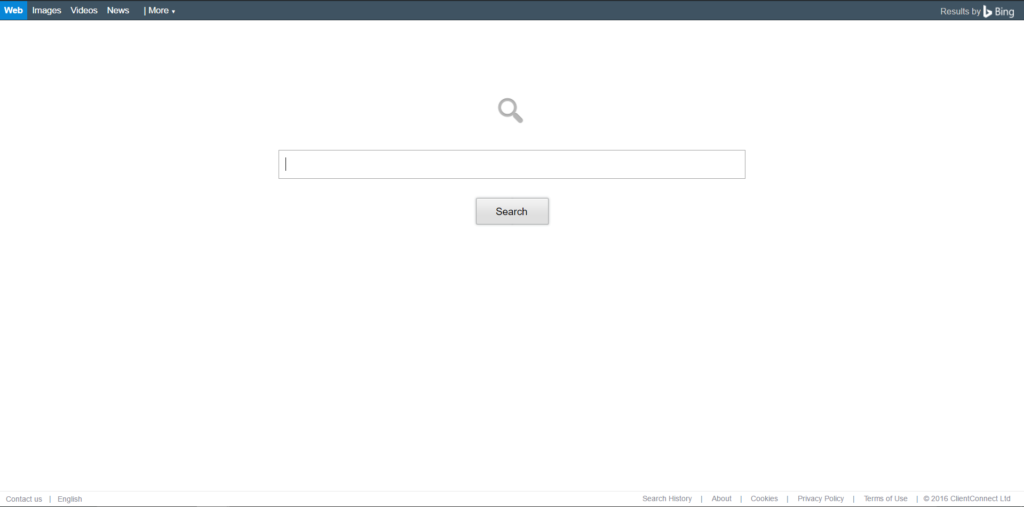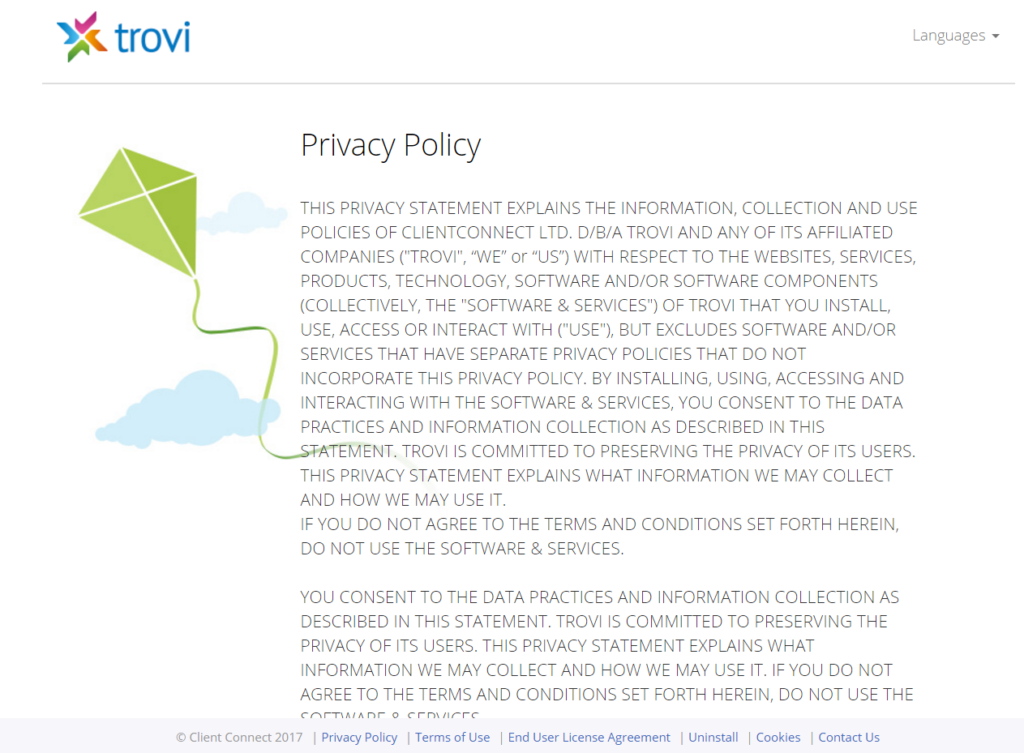You can remove Conduit Search with a few steps. Learn how!
The search engine spreads with PUPs. Similar to other hijackers, Conduit tricks people into installing it. It’s one of the most spread malicious search engines worldwide.
Conduit Search Browser Hijacker – How Did I Get It?
Conduit Search (CS) spreads via freeware programs. They are often called PUPs which means Potentially Unwanted Programs. The wizards of PUPs offer hidden options that are accepted. To un-accept them, you should:
- Go to the Advanced, Custom, or Slow section.
- Untick any useless content.
- Continue Installing
The problem can be more serious. Some programs refuse to install without hijacker permissions. Freeware tools and browser extensions do this often. They want to trick people into installing useless content like Conduit Search. CS can affect Google Chrome, Internet Explorer, Mozilla Firefox, and other mainstream browsers.
Conduit Search Browser Hijacker – What Does It Do?
The site is based around advertising, which isn’t unusual. Google and Bing also do it. The difference is in quality. Mainstream search engines don’t use hijacking to spread.
Here’s the look of the Conduit Search homepage:

The site looks fairly inconspicuous. There’s a reason for that. Many people don’t even notice anything different from their usual search engine. The switch can be written off as a software update. CS utilizes that deception well. The search engine is popular. It holds an Alexa position of around 2000 for months now. According to EnigmaSoftware, half a million PCs are infected:

CS aims to collect your data. The privacy policy discloses that:

In all fairness, collecting personal data isn’t their goal. CS wants to get your information for advertising purposes. That can also be dangerous. You never know where your information may go. That’s why you should delete Conduit Search.
How To Prevent Hijackers like Conduit Search
You can delete Conduit Search with an anti-malware tool. The tool can also prevent similar threats in the future. You can download it, scan your system, and remove CS or other cybersecurity threats from your computer.
How to Remove ?
For a faster solution, you can run a scan with an advanced malware removal tool and delete completely with a few mouse clicks.
STEP I: Start the PC in Safe Mode with Network
This will isolate all files and objects created by the browser hijacker so they will be removed efficiently.
-
1) Hit WIN Key + R

- 2) A Run window will appear. In it, write “msconfig” and then press Enter
3) A Configuration box shall appear. In it Choose the tab named “Boot”
4) Mark “Safe Boot” option and then go to “Network” under it to tick it too
5) Apply -> OK
Or check our video guide – “How to start PC in Safe Mode with Networking”
STEP II: Remove from Windows
Here’s a way to remove the program. This method will work regardless if you’re on Windows 10, 8, 7, Vista or XP. Simply selecting the program and pressing delete won’t work, as it’ll leave a lot of small files. That’s bad because these leftovers can linger on and cause all sorts of problems. The best way to delete a program is to uninstall it. Here’s how you can do that:
-
1) Hold the “Windows” button (It’s between CTRL and Alt on most keyboards) and press “R”. You’ll see a pop-up window.

-
2) In the textbox, type “appwiz.cpl”, then press“ Enter ”.

-
3) The “Programs and features” menu should now appear. It’s a list of all the programs installed on the PC. Here you can find the malicious program, select it, and press “Uninstall“.

STEP III: Remove From Your Browser
Before resetting your browser’s settings, you should know that this action will wipe out all your recorded usernames, passwords, and other types of data. Make sure to save them in some way.
-
1) Start Mozilla Firefox. In the upper right corner, click on the Open menu icon and select “Add-ons“.

-
2) Inside the Add-ons Manager select “Extensions“. Search the list of extensions for suspicious entries. If you find any, select them and click “Remove“.

-
3) Click again on the Open menu icon, then click “Options“.

-
4) In the Options window, under “General” tab, click “Restore to Default“.

-
5) Select “Search” in the left menu, mark the unknown search engine and press “Remove”.

-
1) Start Google Chrome. On the upper-right corner, there a “Customize and Control” menu icon. Click on it, then click on “Settings“.

-
2) Click “Extensions” in the left menu. Then click on the trash bin icon to remove the suspicious extension.

-
3) Again in the left menu, under Chrome, Click on “Settings“. Go under “On Startup” and set a new page.

-
4) Afterward, scroll down to “Search“, click on “Manage search engines“.

-
5) In the default search settings list, find the unknown search engine and click on “X“. Then select your search engine of choice and click “Make default“. When you are ready click “Done” button in the right bottom corner.
-
1) Start Internet Explorer. Go to the “Tools” menu and click on “Manage add-ons“.

-
2) In the “Manage add-ons” window, below “Add-on Types“, select “Toolbars and Extensions“. If you see a suspicious toolbar, select it and click “Remove“.

-
3) Then again in the “Manage Add-ons” window, in “Add-on Types“, Select “Search Providers“. Chose a search engine and click “Set as default“. Select the unknown search engine and click “Remove and Close”.

-
4) Open the Tools menu, select “Internet Options”.

-
5) In the “General” tab, in “Home page”, enter your preferred page. Click “Apply” and “OK”.

STEP IV: Remove Completely Browser Hijacker Using SpyHunter Anti-Malware Tool
SpyHunter anti-malware tool will diagnose all current threats on the computer. By purchasing the full version, you will be able to remove all malware threats instantly. Additional information about SpyHunter / Help to uninstall SpyHunter
STEP V: Repair Windows Registry
-
1) Again type simultaneously the Windows Button + R key combination
2) In the box, write “regedit”(without the inverted commas) and hit Enter
3) Type the CTRL+F and then write the malicious name in the search type field to locate the malicious executable
4) In case you have discovered registry keys and values related to the name, you should delete them, but be careful not to delete legitimate keys
Further help for Windows Registry repair
STEP VI: Preventive Security Measures
-
1) Enable and properly configure your Firewall.
2) Install and maintain reliable anti-malware software.
3) Secure your web browser.
4) Check regularly for available software updates and apply them.
5) Disable macros in Office documents.
6) Use strong passwords.
7) Don’t open attachments or click on links unless you’re certain they’re safe.
8) Backup regularly your data.



